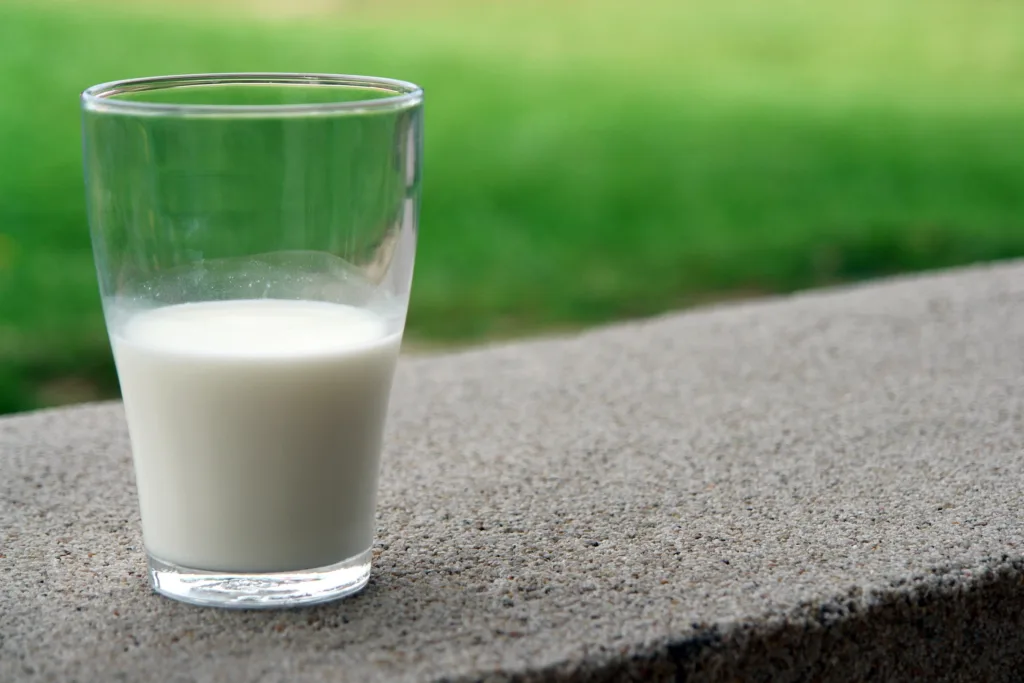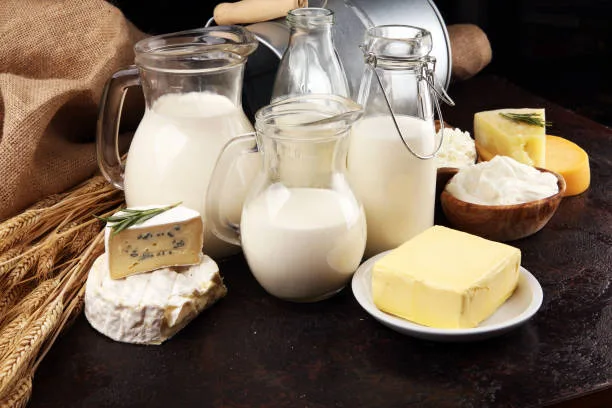Introduction
Maintaining a healthy weight is one of the pillars for extraordinary overall health and wellbeing. However, with the endless fad diets and conflicting nutrition advice out there, achieving and sustaining weight loss can feel frustrating and confusing. This is where embracing the powerful concept of “Dairy Dynamics” can help optimize your weight management approach, no matter your age or stage of life.
Dairy products like milk, cheese, and yogurt contain a unique nutritional profile that directly supports weight control in the body. Yet the power of high-quality dairy foods is often overlooked and underestimated in mainstream weight loss strategies. By understanding the science behind dairy along with smart ways to integrate it into your routine, you can leverage dairy dynamics to ignite metabolism, control hunger, and reach your healthy weight goals successfully.

The Science Behind Dairy Dynamics
Dairy products have a stellar nutritional resume when it comes to weight loss. Milk, cheese, and yogurt deliver a powerhouse combination of high-quality protein, calcium, vitamins, and probiotics that work synergistically to help shed fat while protecting lean muscle mass. Let’s break down what makes dairy a powerful weight loss dynamo:
Powerful Protein
Dairy products contain both whey and casein, the two proteins found in milk. Research shows that whey protein is quickly absorbed, leading to a spike in amino acids that jumpstarts muscle building while boosting metabolism. Casein digests slower, providing a steady supply of amino acids to preserve lean muscle. One study found people who consumed milk protein lost significantly more fat and built more muscle compared to those on a carb-heavy diet.
The high protein content of dairy makes it incredibly satiating as well. Clinical trials show that eating dairy protein results in decreased hunger and greater fullness compared to plant-based or carbohydrate-rich meals. By curbing appetite and cravings, the protein in dairy can reduce overall calorie intake to create a calorie deficit needed for weight loss success.
Metabolism-Revving Calcium and Vitamin D
The calcium and vitamin D in dairy optimize fat burning while inhibiting the formation of new fat cells. Higher calcium intake is associated with enhanced breakdown of fat, leading to greater weight and fat loss according to multiple studies.
It’s believed that calcium binds to fat in the GI tract, preventing absorption. Higher blood calcium levels may also affect metabolism at the cellular level by increasing fat breakdown in adipose tissue. Meanwhile, vitamin D helps maintain healthy insulin levels, which facilitates better fat metabolism.
Gut Health-Promoting Probiotics
The probiotics or “good bacteria” in yogurt support a healthy gut microbiome, which directly impacts weight management. Research shows probiotics increase satiety hormones, reduce appetite, decrease overall calorie intake and enhance nutrient absorption.
Yogurt may specifically enhance fat breakdown around the abdominal area based on studies focused on probiotic supplementation for weight loss. The friendly bacteria in yogurt help reduce inflammation and optimize gut environment.
Essential Vitamins and Minerals
In addition to protein, calcium and probiotics, dairy products supply a range of vitamins and minerals vital for good health and body function. Milk is packed with B vitamins including riboflavin, niacin, and B12 for energy production, red blood cell formation and they help convert food to fuel. Dairy also provides phosphorus for muscle health, magnesium for bone density, and zinc for immune function.
Low in Sugar
Unlike sugary desserts and fruit juices that contain natural sugar, most dairy products are low in sugar, making them a smart choice for weight management and blood sugar control. Persons with diabetes are advised to emphasize low or reduced-fat dairy options like plain Greek yogurt and cottage cheese to support weight loss efforts safely.
Clearly, dairy delivers a nutritional one-two punch that makes it a heavyweight ally in your weight loss journey. Now let’s explore how to strategically integrate dairy dynamics into your routine.

Dairy-Powered Weight Loss Strategies for Different Life Stages
One of the beautiful things about dairy is its effectiveness at facilitating weight management across all life stages. From childhood to the senior years, dairy can be molded to suit each individual’s needs and abilities when it comes to weight loss. Here’s how:
Childhood and Adolescence
Developing children and teens have increased calcium and vitamin D needs to support bone growth and development. Dairy products optimize intake of these essential nutrients. For kids struggling with excess weight gain, the protein in dairy enhances satiety while the calcium and vitamin D ignite fat breakdown.
The high-quality protein also helps maintain and build lean muscle mass. Numerous studies confirm that dairy consumption does not cause weight gain in children and is linked to reduced risk of overweight and obesity. For many kids, milk is the number one source of protein which is vital for proper growth and maintenance of a healthy body weight during adolescent growth spurts.
Focus on incorporating yogurt, milk, and cheese into balanced eating patterns. Limit excessive sugary dairy treats like chocolate milk, ice cream and desserts, which negate the benefits. Modeling healthy dairy habits from a young age can prevent obesity and support lifelong wellness.
Adulthood
For adults, low-fat or nonfat dairy products help combat age-related muscle loss while revving up metabolic rate. The protein, calcium and vitamin D in dairy may counteract the drop in metabolism most adults experience starting in their late 20s by maintaining lean muscle mass and improving fat breakdown.
When choosing dairy foods, emphasize options both high in protein and low in sugar, like plain Greek yogurt and cottage cheese. Enjoy a yogurt parfait for breakfast or cottage cheese at lunch for sustaining energy, curbing appetite and facilitating weight control throughout busy work days.
Senior Years
As we age, muscle mass and bone density decrease, heightening the risk for injury and frailty. These changes also contribute to a slower metabolism. Consuming adequate dairy remains highly beneficial for older adults trying to prevent weight gain or shed pounds in a safe, sustainable way.
However, aging guts produce less lactase enzyme, which is needed to properly digest lactose in milk and dairy. Thus, dairy intake may need to be modified. Try incorporating small portions of hard, aged cheeses and unsweetened Greek yogurt, which contain lower lactose levels. Supplementing with a lactase enzyme can also help minimize unwanted symptoms.
Prioritize dairy foods that offer higher protein like Greek yogurt and cottage cheese to help preserve the calorie burning muscle mass that tends to diminish with aging. Supporting gut health and metabolism through probiotic-rich yogurt is also advised.

Crafting Dairy-Centric Meal Plans
Ready to bring dairy dynamics into your personal weight loss meal plan? Dairy foods can be seamlessly incorporated into breakfasts, main meals and snacks.
Breakfast Boost
To start your day on the right foot, blend a protein packed smoothie with Greek yogurt and milk for an energizing meal that keeps you full and focused for hours. The whey and casein balance provides both quick and sustained nutrition. Overnight oats soaked with low-fat dairy are another slimming breakfast option. Or whip up a yogurt berry parfait topped with nuts, seeds, or high-fiber cereal.
Satisfying Lunch and Dinner
Build nutrient-dense lunches and dinners around lean dairy protein sources like milk-based cottage cheese, ricotta cheese, skim milk mozzarella or hormone-free grilled chicken breast. Pair with fiber-rich whole grains, non-starchy vegetables and healthy fats for maximum nutrition in every meal.
For simple lunches, top salads with diced grilled chicken or cheese for a filling dairy-powered combination. Blend creamy vegetable soups with a milk base and stir in yogurt or cheese for extra protein. Greek yogurt also makes an excellent base for healthier dips and dressings to enjoy with raw veggies or whole grain crackers and pita.
Smart Snacking
Curb unhealthy snacking inclined to derail your progress by keeping portable dairy snacks like cheese sticks, yogurt cups and cottage cheese on hand. Not only do they provide steady energy between meals, but dairy protein stimulates the release of appetite-reducing hormones like PYY and GLP-1 to prevent overeating.
When cravings strike, blend frozen bananas with milk and cocoa powder for a sweet treat. Or dip strawberries in Greek yogurt mixed with chocolate protein powder. Just watch portion sizes, as too much of even healthy dips can pack excess calories.
Beverage Boosters
Sneak extra dairy into your day by blending plain yogurt or milk into a post-workout recovery shake. You can also enjoy a warm cup of bone-strengthening cocoa made with low-fat milk in the evenings for an indulgence that fits your healthy eating plan.

Overcoming Dairy Myths and Allergies
With the rise in dairy-free diets, some question whether dairy is truly a healthy choice for weight management. Here’s the truth behind common dairy misconceptions:
Myth: Dairy causes inflammation linked to weight gain.
Fact: Dairy has anti-inflammatory properties according to research. Inflammation is linked to obesity, so dairy may be protective.
Myth: Full-fat dairy is fattening.
Fact: Some studies suggest full-fat dairy may aid weight loss better than low-fat versions, linked to better appetite and blood sugar control. However, low or nonfat dairy can facilitate weight loss as well in a balanced eating pattern.
Myth: Dairy increases disease risk.
Fact: Numerous studies reveal dairy lowers risk for type 2 diabetes, cardiovascular disease and metabolic syndrome. The nutrients in dairy support many body processes.
For those with lactose intolerance or milk allergies, lactose-free milk, plant-based yogurts and vegan cheese may be options to confer some benefits of dairy. Always confirm restrictions and alternatives with your healthcare provider.
Conclusion
Achieving sustainable weight loss requires a holistic approach centered on balanced nutrition, physical activity, and lifestyle habits tailored to your needs. As the science has highlighted, dairy can serve as a safe and effective ally on your journey to a healthy weight by providing key proteins, vitamins and minerals uniquely designed to optimize fat burning and lean muscle mass.
Keep in mind that dairy is just one part of the weight loss equation. Consume dairy as part of an overall eating pattern focused on whole, minimally processed foods. Exercise, stress management and optimal sleep are also key pieces. Collaborate with healthcare and nutrition professionals to develop a comprehensive plan leveraging dairy and other nutrient-dense foods.
Weight loss takes commitment, patience and resilience. But by understanding the science behind extraordinary dairy dynamics, you now have an additional nutritional tool to create your own success story. Remember, small steps done consistently over time lead to big progress. A healthier and happier you awaits – believe it and achieve it!
Thank you for reading this post, don't forget to subscribe to our free newsletter
!
